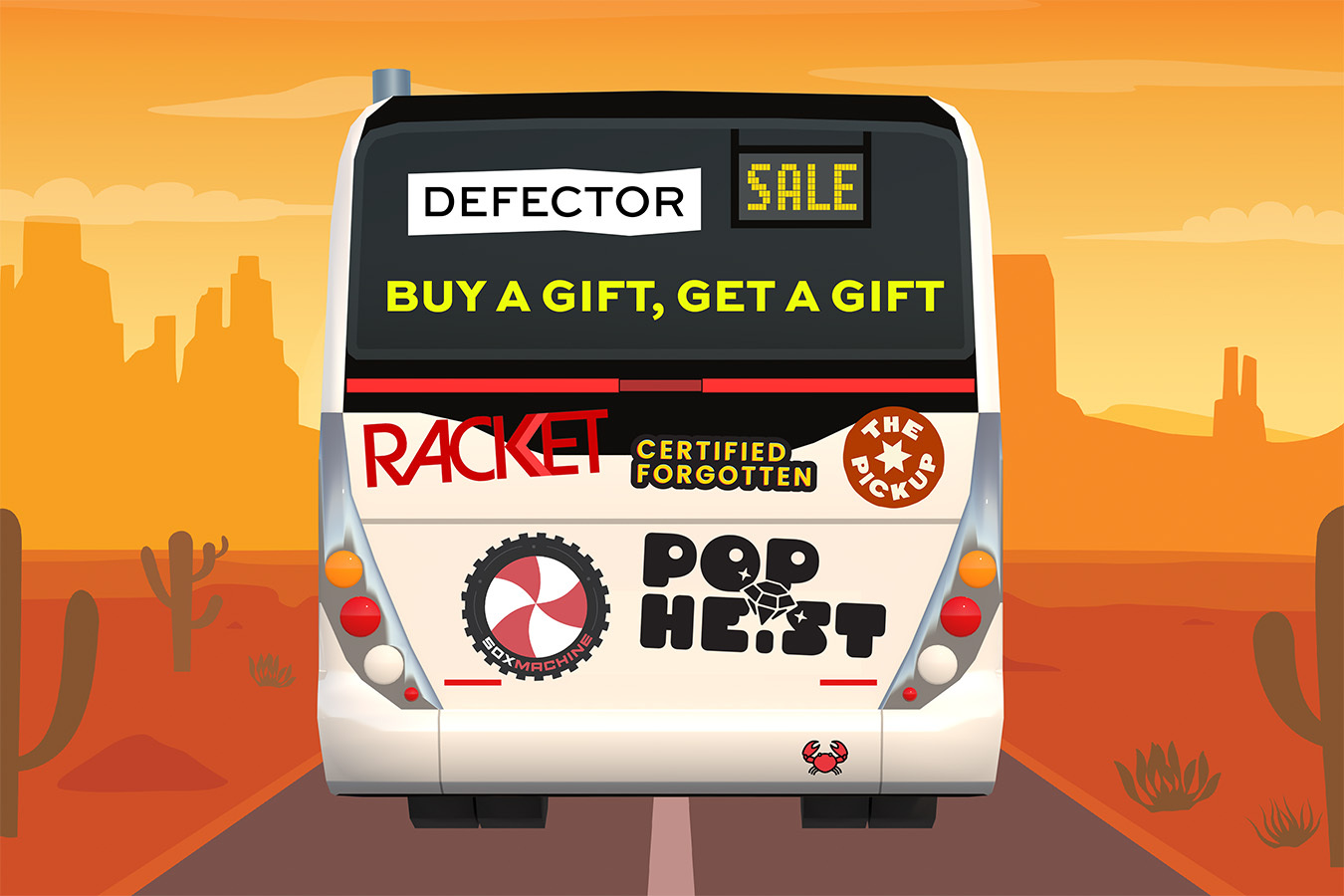Like all worthwhile endeavours, the (semi)annual celebration of independent record store culture called Record Store Day started with an idea. Specifically, it started with a dashed-off email with a subject line reading, simply, “idea.”
“[I]t could be a national event that drives people to indie stores,” Chris Brown, of Portland, Maine-based indie retailer Bull Moose Records, wrote to a consortium of colleagues. “We would need some nice licensed pieces–maybe something along the lines of the upcoming Guided By Voices rarities box…There is a huge press angle here too. Indies rule. We haven't gone anywhere…Video, print and online testimonials from artists would run in every market to promote the event…Try to include movie stars and game developers…”
From those dashed-off half-thoughts, Record Store Day (RSD) was born. Launched in 2008, the branded event did what Brown had hoped: drive traffic to record stores with live concerts (fans camped out in the parking lot of Rasputin Music in Mountain View, Calif., to catch a kick-off show by local heroes Metallica) and exclusive releases. These early exclusives played pretty much directly to RSD’s founding, indie spirit: vinyl 7-inches from R.E.M., Stephen Malkmus, Built to Spill, Vampire Weekend, and so on. The event was a huge success. And in time, more and more stores, from Cheyenne, Wyo., to Kuala Lumpur to Szeged, Hungary, began taking part.
Those super-exclusive releases started multiplying, too. Many of them were legitimately notable. In 2013, a mega-rare release by Scottish electronic duo Boards of Canada was limited to just six copies, immediately making it one of the more collectable records ever pressed. But such rarity—or the perception of it—tainted Record Store Day. More than just celebrating the “spirit” of struggling, mom-and-pop record stores qua itself, these rare baubles became the reason for the season. As Record Store Day has grown in popularity, the definition of words like “rare” and “collectible” is becoming increasingly strained. Stupid, even.
Take this year’s slate. From a modest collection of 10 specially pressed singles, Record Store Day’s annual catalog of releases has bloated to hundreds of titles. Among them: a single from the children’s television program Bluey, and an “unreleased collection” of tunes performed by Rock-afire Explosion, which was the in-house animatronic band for ShowBiz Pizza Place, longtime rival to the Charles Entertainment Cheese empire of pizza, arcade games, and all-around family fun. There’s also Sword of Rage, an album by Anthrax frontman Scott Ian that was originally composed for a pinball machine. What’s next? A limited-edition-of-400 Nokia ringtone single? A “Neighbour’s Dog Barking (Woof-Woof-Woof Remix)” 12-inch?
Of course, there is plenty of good stuff, too. And if someone were to gift me the new reissue of Consumer Revolt, the debut studio album by Cop Shoot Cop (limited to just 800 copies!!!), I would gladly accept it, and listen to it. But I’m focusing on the stupider stuff, because the stupider stuff speaks to a broader point. And that point is this: Nobody with good taste, or sound mind, would drop the proverbial needle on an LP by an '80s mechanic in-house pizzeria band. These titles exist not to be enjoyed or listened to, as one might, you know, listen to an album of recorded music. Rather, they exist to be coveted and collected. In their manufactured scarcity—and even in their just-as-manufactured inanity—they represent the most noxious end of record-collecting culture.
There is in record collecting, as in all collecting, an element of what good ol’ Karl Marx called “commodity fetishism.” Basically, it’s the idea that an object is imbued with a significance that exceeds its purported “use-value.” So, the ostensible use value of a Bluey 7-inch may be entertaining a small child, who is enamored by that particular cartoon dog, for a short while. The “fetish” bit emerges in the idea that a Bluey 7-inch is valuable beyond that, like in its projected monetary value on a resale market of desirous collectors. All collections have at least some sort of a fetishistic quality. If you display your records on a shelf, for reasons of aesthetics, you’re presenting them in a way that transcends their use-value. Marx would say you should store them in, I don’t know, a hole or something.
This fetishistic quality was, I think, a key component in the modern-day record revival. Alienated by bites and bytes and low-quality compressed music files, consumers started yearning for the cumbersome physicality of old-fashioned records. Shrunk-wrapped reissues of Strokes records started lining the checkouts at Urban Outfitters. Relative newcomers to the twisted world of audiophilia whispered about the “warmth” of vinyl, like David Cross in that one Mr. Show sketch, extolling the virtues of the mini-Victrola: “People need to hear snaps and pops and that shit!” Such wooly rationalizations further drove consumer habits.
Personally, I’m no stranger to the gotta-have-it, Malibu-Stacy-with-a-new-hat fetishism ginned up by RSD. In 2017, I splashed an obscene sum on a box set release of Grateful Dead’s May 8, 1977 show at Cornell University, widely regarded as one of the group’s finest hours. I did so not because I hadn’t heard the show, or because high-quality recordings did not exist elsewhere, but rather because I felt like it was something I, as a fan of Grateful Dead music, should have. (And this despite the fact that listening to a single concert split across five records sort of spoils the immersion of it all.)
At a very basic level, commodity fetishism is fine, and probably pretty normal: a way of declaring, “Here is my stuff that I like.” It can be an expression not only of personal curatorial habits, but of taste, and identity. But commodities conceived along the line of Record Store Day exclusives push this to an extreme. Their use-value is practically nil. They are only commodities. And as far as statements of taste and identity go, they announce only “I am a big-time commodity fetishist!”
But enough “theory.” Record Store Day’s swelling popularity—and that of its exclusive releases, in particular—pose more practical problems. Back in 2007, the event was minted to combat the emergence of digitized music, peer-to-peer file-sharing, and the resulting knock-back effects on brick-and-mortar retailers. But those same conditions had a wider effect on the music industry. Specifically, they made pressing records at all something of a rarity.
When Record Store Day was founded, LP retail was in the trenches. Record sales had been supplanted not just by illegal downloading, but by the emergence of the Compact Disc a decade-plus earlier. Record plants across America, and the globe, shuttered. The contemporary resurgence of vinyl record sales, according to industry reporters, was primarily driven by Record Store Day itself. Following the 2008 event, record sales in America boomed by about 147 percent in the United States. But manufacturing did not exactly boom with them.
What record-pressing plants do exist are increasingly given over to RSD releases. As one London shopkeeper told The Guardian a few years ago, that fact alone may be doing more harm than good: “The administrative ramifications are hugely consuming for shops and the economic impact for independent artists and labels is devastating.”
A few years back, when I wrote a Record Store Day-pegged listicle on my city’s best record shops, I was surprised to learn that many of the more reputable shops—the ones with the best selections, and the surliest clerks—weren’t even bothering to take part in the festivities. And can you really blame them? They have to buy the exclusive stock from RSD-affiliated vendors, in order to officially take part in an event ostensibly meant to keep them afloat. Imagine spending all year painstakingly curating a shop, only to have put aside money to bulk-order a bunch of Bluey singles? Or, for that matter, imagine being an actual independent artist who couldn’t get a record pressed because the factory was clogged with orders for “Be A Man,” a novelty single by wrestler “Macho Man” Randy Savage?
Born of the best intentions, Record Store Day risks surrendering to the basest, stupidest, worst tendencies of collector culture, and of capitalism itself. The focus on fetishized rarity, and artificial scarcity, feels all too consistent with other despairing trends in music culture, like bloated reissues conceived to remonetize an artist’s back catalog, or astronomically priced concert tickets packaged with artist meet-and-greets, which humiliate all involved. Perhaps it’s just another annoying quirk of capitalism itself that even the most well-meaning, indie-spirited retailers are forced to adopt the most embarrassing, exploitative rules of the game. Who could begrudge hardscrabble record store jockeys from wanting to make a few bucks? The issue is that those bucks may well come at the expense of the very indie record store culture they’re struggling to preserve.
Want to know who the best-selling, most coveted, utterly fetishized beneficiary of Record Store Day is? It’s not Stephen Malkmus. Or Boards of Canada. Or even the robots in Rock-afire Explosion. It’s Taylor Swift, whose phony-rare reissues regularly dominate RSD charts, and whose releases rank among the most hankered-after in the vinyl resale market. The top-grossing, most popular artist on planet Earth, whose songbook millions can recite by heart, who once chartered two separate private jets in order to race from Tokyo to Las Vegas to see her boyfriend play in the Super Bowl, who is about as culturally ubiquitous as Coca-Cola or the Burger King jingle. Indies rule, all right.







